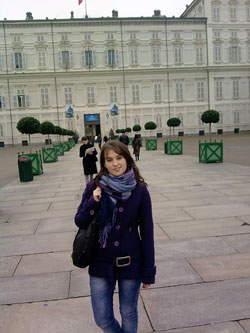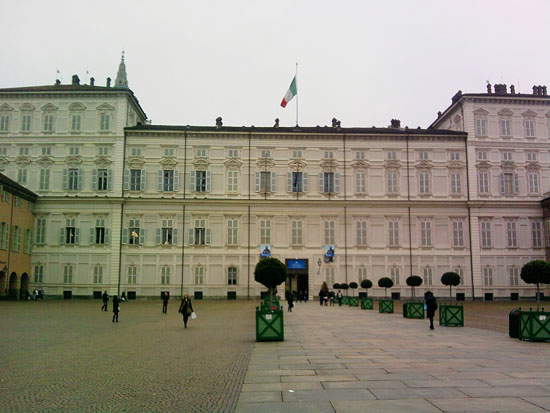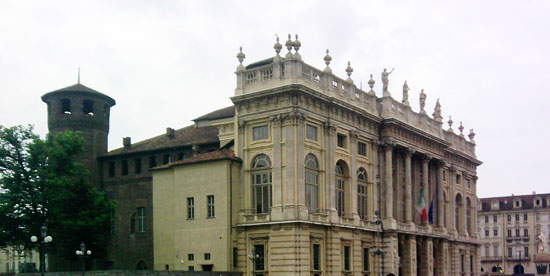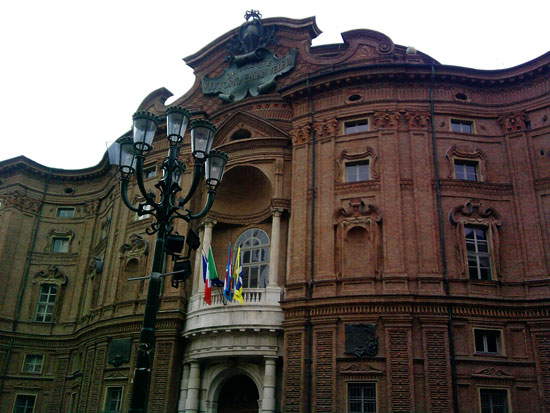Since 1997, the Savoy Residences of Piedmont have become part of the UNESCO World Heritage Sites. Of these, five are located in the municipal territory of Turin. And four are located in the historic center, so in one walk it is possible to discover them all! But to admire the splendid masterpieces inside them, you will have to give yourself more time: for Palazzo Madama and Palazzo Reale alone you will probably need a full day, unless you want to go in a hurry... a choice that is always not recommended, however! Because when traveling, it is always nice to enjoy the destination in a slow, leisurely way. We are on vacation, right? There’s nothing worse than being a “I want to see everything” enforcer... if you’re left with something to look forward to, you can always come back. Besides, in addition to being a wonderful city that deserves more than one visit, Turin is a city of mysterious and timeless charm that lends itself to slow living. But let’s find out what are the five UNESCO-protected places in Turin: to visit them is to touch the places that were lived in by what was one of the most powerful families in European history.
1. The Palazzi del Potere complex
Ilaria in front of the Royal Palace
The first place is actually a vast set of buildings that occupies much of the northern side of the so-called Quadrilatero Romano, the oldest (as well as the most stately) area of the city. Of this vast complex, the main building is the Royal Palace, which was for a long time the official residence of the Savoy family: today it is a visitable museum (remember? Ilaria talked about it in Musei d’Italia) that tells the story of the Savoy family, with rooms preserved and left as they were a couple of centuries ago (we were amazed to see even a sumptuous table set and Vittorio Emanuele II’s collection of toy soldiers!). Amidst luxurious apartments and immense ballrooms, we will get acquainted with the flair of Filippo Juvarra, the court architect responsible for the design of numerous buildings in 18th-century Turin: the city’s oh-so-elegant atmospheres owe much to him as well, who created two of his masterpieces, the Scalone delle Forbici and the Chinese Cabinet, inside the Royal Palace. The New Channel of the Palace has also housed, since December 2014, the Sabauda Gallery, which was formerly located in the Palace of the Academy of Sciences, where the Egyptian Museum is housed. Also part of the Palazzi del Potere complex are the Royal Library, where Leonardo da Vinci’s celebrated Self-Portrait is kept; theRoyal Armory, which contains the vast collection of weapons of the Savoy family; Palazzo Chiablese, former residence of the prince cadets of the royal family and now a museum; the Teatro Regio; the State Archives; the Royal Secretariats (now the seat of the Prefecture); the Royal Mint; and the Royal Cavallerizza: the latter building, which formerly served as the stables and stables for the horses of the Savoy family, is now a theater venue.
 |
| The facade of the Royal Palace |
2. Madama Palace
Palazzo Madama is one of Turin’s most distinctive buildings, and its uniqueness is due to the fact that it consists of two distinct parts: the spectacular and very elegant 18th-century facade, the work of Filippo Juvarra, and the Casaforte degli Acaja, the 15th-century castle, with its very recognizable cylindrical corner towers, that occupies three sides of the square to which it gives its name (precisely Piazza Castello). Palazzo Madama is so named by virtue of the fact that it was the residence of the two so-called"royal madames" of the House of Savoy, Christina of France and Marie Jeanne Baptiste of Savoy-Nemours, both of whom lived between the seventeenth and eighteenth centuries and became regents of Savoy upon the death of their husbands. Today, Palazzo Madama houses the Musei Civici d’Arte Antica (and Ilaria had also told you about these museums in Musei d’Italia), where there are artistic masterpieces of high value: paintings of the Piedmontese Renaissance stand out, above all those by Gaudenzio Ferrari, Defendente Ferrari, Martino Spanzotti and Macrino d’Alba, as well as very important works by Antonello da Messina, Orazio Gentileschi, Giovanni Paolo Pannini, Giulio Cesare Procaccini, Matthias Stomer and many others. Also not to be missed is the lapidary, which contains much evidence of medieval Turin.
 |
| Madama Palace |
3. Carignano Palace
Palazzo Carignano stands out for its curved facade, made entirely of terracotta: it is a Baroque masterpiece by Guarino Guarini, a great court architect in the 17th century, who took his cue to create the facade of Palazzo Carignano from drawings that Gian Lorenzo Bernini had made for the Louvre, but which remained only drawings as they did not meet the taste of the French court. In ancient times it was the residence of the princes of Carignano, the branch of the Savoy family that came to power with Charles Albert in 1831, after the direct line had died out with the death of Charles Felix, who had left no heirs. In 1831 the palace became the property of the State Property Office and, after theUnification of Italy, was the seat of the Parliament of the Kingdom of Italy. When the capital moved to Rome, Palazzo Carignano became home to other institutions. Instead, today it houses the National Museum of the Risorgimento.
 |
| Carignano Palace |
4. Valentino Castle
This is another of the city’s most distinctive and famous buildings. The fact that it is so reminiscent of French castles, with its typical slate pitched roofs, is due to the fact that it was chosen as a residence by the aforementioned Christina of France, wife of Victor Amadeus I of Savoy: she wanted the architects Carlo and Amedeo di Castellammonte to design a palace that was modeled precisely on the residences of the French court. The result is what we still see today. The castle is nestled in the Valentino Park.However, we do not know for sure why the name “Valentino” has been in use since ancient times. As early as the Middle Ages, in fact, this toponym is attested, perhaps derived from the name of a personage who lived in these parts. The castle today houses the Faculty of Architecture of the Polytechnic University of Turin.
5. Villa of the Queen
It is located on the hill above the church of the Gran Madre di Dio, on the opposite bank of the Po from the center of Turin, and is reached by crossing the Vittorio Emanuele I bridge and walking all the way up the straight avenue from the river banks to the hill. Built in the 17th century, it was one of the residences of the House of Savoy: it was a pleasure villa that housed the women of the household. Very special is its scenic amphitheater garden. Today it is home to exhibitions and events.
 |
| Queen’s Villa (photo by Marco Plassio) |
These architectural buildings make the city of Turin very stately, and strolling through its streets and squares you will feel as if you have fallen into the world of fairy tales. The castles and palaces will welcome you into their splendid halls, full of mirrors and luxury, and bring to mind scenes of sumptuous princely balls. A highly recommended destination for romantics and those who dream of living in a city where art, architecture and scenery come together to create a fairy-tale atmosphere.
Warning: the translation into English of the original Italian article was created using automatic tools. We undertake to review all articles, but we do not guarantee the total absence of inaccuracies in the translation due to the program. You can find the original by clicking on the ITA button. If you find any mistake,please contact us.